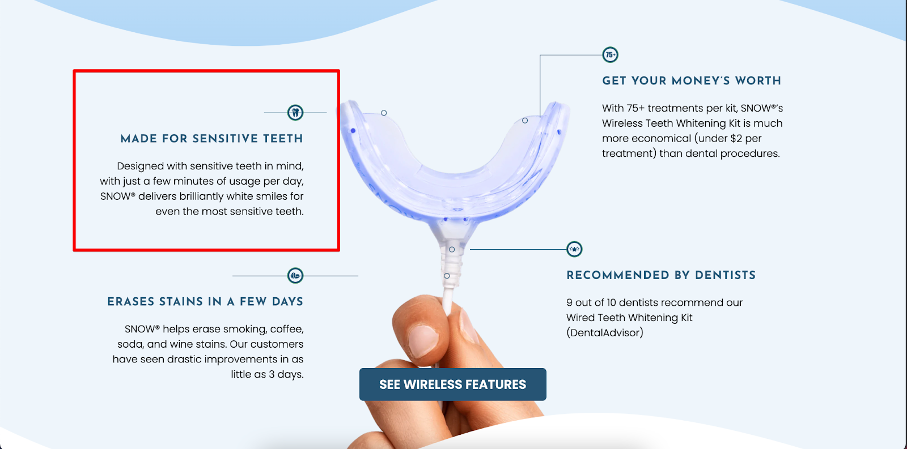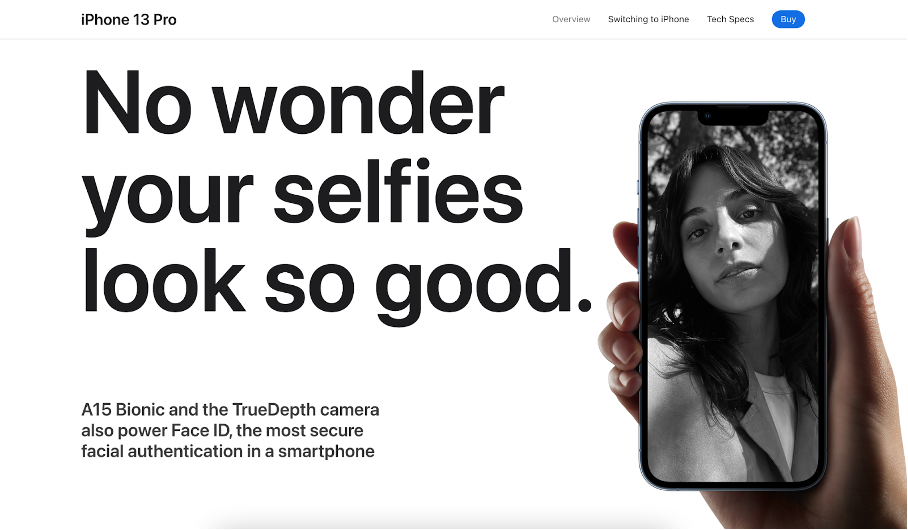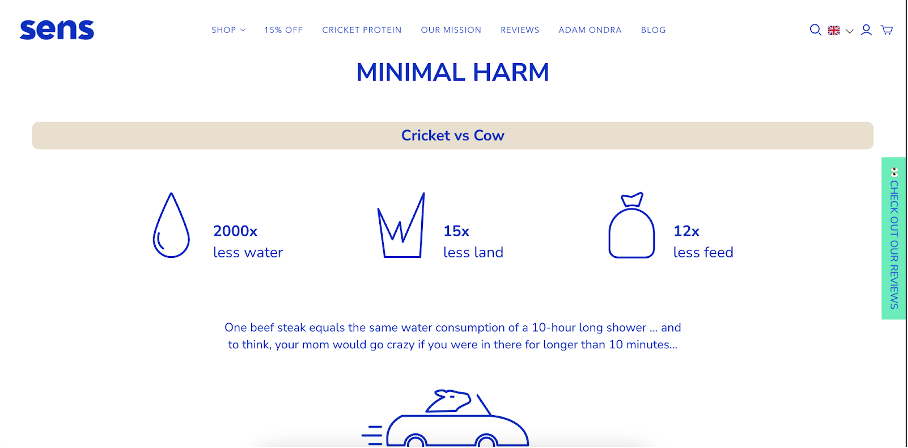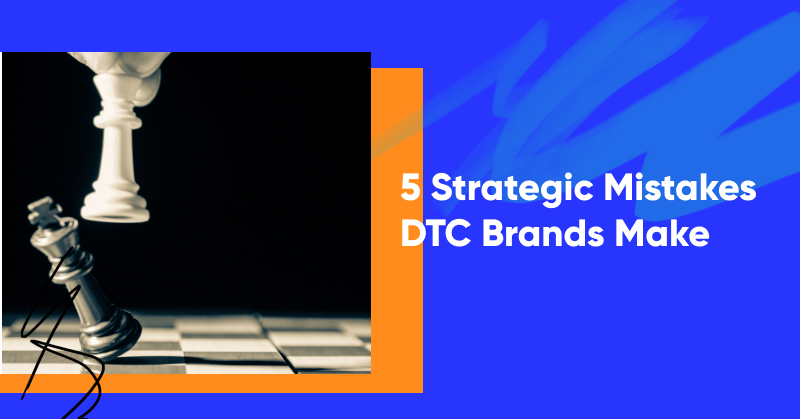When people talk about running an online business, they often mix D2C and B2C businesses together. While they both have an online store as a central element of their business, there are actually more differences than similarities when it comes to running these two types of businesses.
From a technical perspective, they’re quite similar, but from a strategic perspective, they’re very, very different.
Let’s see where D2C businesses make their biggest strategic mistakes with their marketing efforts!
1. Not having a USP
Being a D2C business means that you’re trying to market your product as the best solution for the customer’s problem. Unlike a B2C business, for a D2C business it’s not enough to simply rank for the right keywords, provide a smooth online experience, and have good prices.
You have a bigger challenge: you need to convince your visitors that your product is truly superior when it comes to solving their problems… better than any other product, including all the other well-known brands on the market.
You’re not simply competing with other online stores. You’re competing on branding.
“Why should someone choose my brand over ______ (insert your biggest competitors’ names here)?” It’s a question that’s not asked often enough.
DTC brands need positioning and differentiation to thrive—which is often called a USP (Unique Selling Point). It’s the easy-to-remember, consistent answer you can give to the question, “why you?”
A good example of a product with a strong USP is Snow, an at-home teeth whitening solution. While there are many other teeth whitening solutions, Snow realized that teeth sensitivity is a big concern for potential customers, and they started focusing on this as the main value proposition:

2. Talking only about your differentiating features and not your advantages
Do you have a lot of direct competitors?
If so, you’re most likely competing in a red ocean. This means that you’re in a mature category where your potential customers know quite well what to expect from your category as a solution.
In these cases, you don’t need to focus as much on the problem you solve, but rather on the differentiating factors of your product or solution.
How are you different from all the rest of the competition?
The mistake most DTC brands make is that they talk in their market’s jargon and place a lot of emphasis on features. They use professional idioms and abbreviations, and they expect their customers to understand their lingo.
The truth is that people are not buying features, they’re buying the value that those features can create for them. In other words, you need to translate your features into customer advantages or benefits.
Instead of telling people that your smartphone has a “120Hz adaptive refresh display,” tell them that the “things you do every day will feel phenomenally fluid” and that it’s “perfect for power gamers.”
This is exactly what Apple does— their product pages are masterpieces of turning features into advantages:

3. Not talking enough about the problem you solve
There are plenty of DTC brands trying to solve “under the radar” problems.
You might find yourself competing in a blue ocean, creating a new category. How can you tell? Well, if you’re having trouble finding the right Google search keywords to advertise for, or if the keywords you find are not competitive, you might be in this situation.
In this case, your job is to take a step back from talking about your product and its differentiating factors. You need to think big picture: talk about the problem your product is solving, and why people should care in the first place!
You have to evangelize the problem and your category itself as a solution—which is the main essence of demand generation. If you can convince your market that your category solves an important problem they’re facing, they will be automatically drawn toward your product as a solution.
A good example is Sens Protein, who sells insect (cricket) protein. They wisely place less emphasis on what makes their supplement different, and more emphasis on the problem they’re solving, which is the environmental effects of beef-based products:

4. Trying to copy Amazon (or any B2C retailer)
Amazon and other B2C retailers are competing in a very different game. They don’t need to convince the customer that their product is the best. Their job is to help the customer choose from all the brands and products they’re selling, and convince them that it’s in the customer’s best interest to place the order at their online store.
They’re basically competing on price, selection, speed, and convenience. These are all factors that you can’t (and shouldn’t!) compete on as a DTC business.
Of course, having any of these as an advantage will not hurt your sales, but you should never make any of these your USP.
You can be a successful D2C brand with the highest price (compared to similar products), the smallest selection (having maybe only one product), a super slow delivery (it might take even months), and a very basic online store. Given all these, you could still crush your competition.
How? By doing a great job at generating demand and marketing your uniqueness. If you do that right, then people will want to buy your product—and they’ll have no other choice but to go to your website, pay whatever you charge for it, and wait however long it takes to get it.
The only thing you should be copying from Amazon is the personalized experience they provide: the more personalized your onsite messaging (like differentiating between new and returning users and providing different offers to different customers), the better the customer experience. And the better the customer experience, the higher your conversion rates!
5. Not building a list
Another huge mistake D2C brands make in copying Amazon is neglecting their list building.
“Amazon isn’t using popups, so why should I?”
There are three important differences, though.
The first is that Amazon and other big retailers have unlimited access to their potential customers. They don’t need to build a list, because the customers will find them anyway. And if those customers don’t buy now, they’ll most likely come back later.
The second big difference is that B2C brands usually don’t need to nurture their customers with consistent messaging. Let’s say they’re selling bicycles, for example. The customer comes, browses, decides, and buys (or leaves). There’s no point in sending months of content about the advantages of cycling!
As a D2C brand, you’re in the opposite situation: you need to convince users that the problem you solve is important. And you need to convince them that your product is the best solution for their problem. This often takes time… more time than a single browsing session.
So it’s crucial for you to have direct access to your customers where you can nurture the relationship and keep reinforcing your narrative regularly.
The third big difference is that B2C is mostly search-based. Ranking well on Google is so much more important for a B2C brand than having an email list. Of course, being able to send an email regularly doesn’t hurt, but it’s not critical for them to nurture their list.
Email is a “nice to have” for most B2C retailers, while it’s a “must have” for D2C brands.
Summary
As you can see, being a D2C brand is very different from being a B2C brand—even if they look similar from the outside.
Understanding all these differences will allow you to focus on the right challenges (like finding your USP and better communicating your differentiators), instead of trying to compete on terms (like price, selection, or convenience) where you’re bound to lose.
Hopefully, this article has given you some great ideas and inspired you to take a more strategic approach to growing your DTC brand. Good luck!













